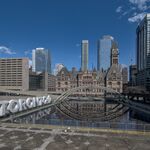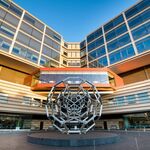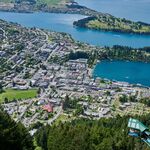ssiguy2
Senior Member
Let U-turns have been used very successfully and especially when they are employed not only on the street the train is running down but also the streets they are crossing. They have also proven themselves to be very safe and especially for pedestrians as they get rid of all pedestrian/car interaction. They also REDUCE traffic congestion and backups as they give left-hand turns longer times to turn then just regular advanced green lights. Controlled and uncontrolled U-turn routes are fairly common in BC along commercial roads that are separated by concrete infill between the opposing traffic.
Eglinton is the world's most expensive streetcar and will never have the capacity, reliablity, or frequency of a grade separated system. Infact it will never even have the same attributes compared to other LRT systems like CTrain or LA LRT. IT will have to be divided into 2 completely different lines or the system will simply not have the capacity needed for the grade separated sections.
Will Eglinton be a failure.............of course not. It will be a well used corridor but the City has gotten incredibly little bang for it's buck.
Eglinton is the world's most expensive streetcar and will never have the capacity, reliablity, or frequency of a grade separated system. Infact it will never even have the same attributes compared to other LRT systems like CTrain or LA LRT. IT will have to be divided into 2 completely different lines or the system will simply not have the capacity needed for the grade separated sections.
Will Eglinton be a failure.............of course not. It will be a well used corridor but the City has gotten incredibly little bang for it's buck.




